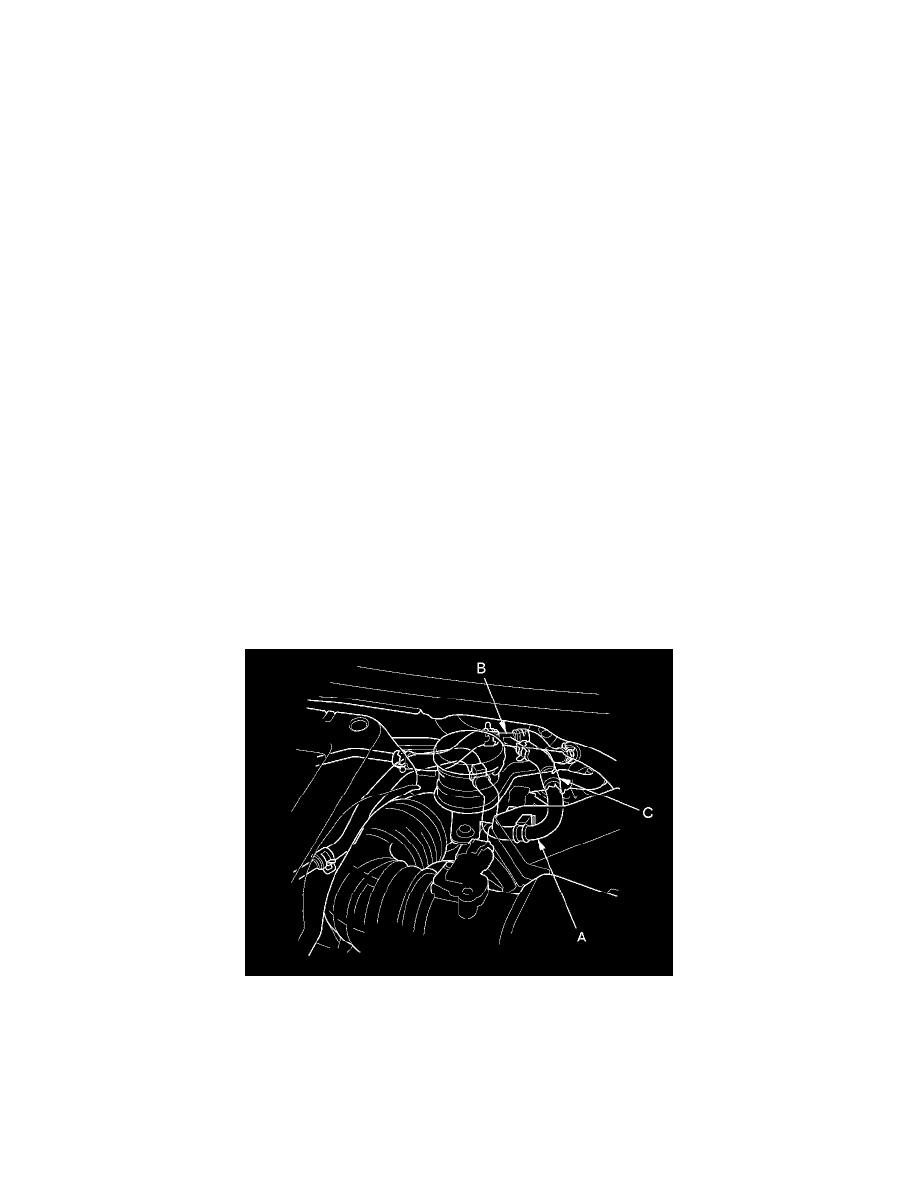RDX AWD L4-2.3L Turbo (2010)

Vacuum Brake Booster: Testing and Inspection
Brake Booster Test
NOTE: The brake booster system is assisted by an electric vacuum pump. If the electric vacuum pump system indicator stays on, check the electric
vacuum pump system See: Testing and Inspection/Initial Inspection and Diagnostic Overview before you test the brake booster. If the indicator comes
on when testing the brake booster, there is no problem. Just check for and clear any DTCs with the HDS See: Testing and Inspection/Initial Inspection
and Diagnostic Overview.
Functional Test
1. With the ignition switch in LOCK (0), press the brake pedal several times to deplete the vacuum reservoir, then press the brake pedal hard and
hold it for 15 seconds. If the brake pedal sinks, either the master cylinder is bypassing internally or the brake system is leaking. Inspect the brake
hoses and lines See: Hydraulic System/Brake Hose/Line/Testing and Inspection.
2. Start the engine with the brake pedal pressed. If the brake pedal sinks slightly, the vacuum booster is operating normally. If the brake pedal height
does not vary, do the brake system test See: Testing and Inspection/Component Tests and General Diagnostics.
Leak Test
1. Press the brake pedal with the engine running, then turn the ignition switch to LOCK (0). The brake pedal height should not vary while pressed for
30 seconds.
-
If the pedal height rises, go to step 6.
-
If it does not rise, go to step 2.
2. Start the engine and let it idle for 30 seconds. Turn the ignition switch to LOCK (0), and wait 30 seconds. Press the brake pedal several times using
normal pressure. When the pedal is first pressed, it should be low. On consecutive applications, the pedal height should gradually rise.
-
If it rises, the booster is OK.
-
If it does not rise, go to step 3.
3. Disconnect the brake booster vacuum hose (A) from the 3-way joint (B). The check valve (C) is built into the hose.
NOTE: If the check valve is faulty, replace the brake booster vacuum hose/check valve as an assembly.
4. Start the engine, and let it idle. There should be vacuum available.
-
If no vacuum is available, the check valve is not working properly. Replace the brake booster vacuum hose and the check valve, and retest.
-
If vacuum is found, go to step 5.
5. With the ignition switch at LOCK (0), reconnect the vacuum hose to the 3-way joint.
6. Start the engine, and then pinch the brake booster vacuum hose between the 3-way joint and the booster.
